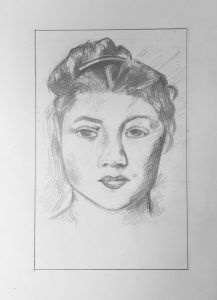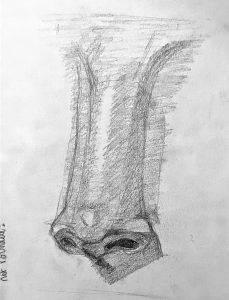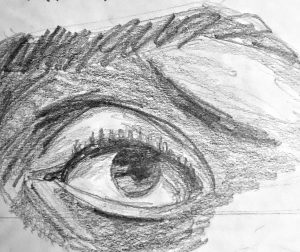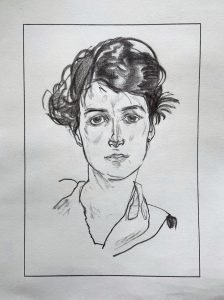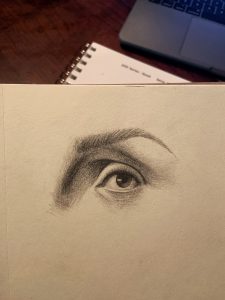Good for you for going after this twice. The second one is definitely better, for the reasons you mention, but see my additional notes, below.
Good work, Olivia—this is unmistakably a David Hockney drawing with good composition, good configuration, and the lively, insouciant spirit of his mark-making—but these also appears a bit rushed, or at least not slowing down enough to take in more of the nuances. A few notes:
Great improvement to the proportion of the hair in the second version.
Both eyes are too large, but especially the eye on our left.
His glasses have a different shape and are more similar in shape.
The nose is a bit too long.
The comers of the mouth turn down slightly, not straight across. This is not just a matter of his expression–that slight curve connotes the volume of the lower face. By making it straight it flattens the head a bit.
The distance from mouth to bottom of chin needs to be greater.
His cheek on our right, below the frames is light grey, not white, achieved with a smudged tone. Same is true for the entire neck, which is entirely in shadow (also light grey–no whites). You seem to have trouble embracing the lighter greys, jumping from white to almost a middle grey. There’s a range of tones in between in the Hockney, and following his lead is a good way to get over this hump. These values are best obained by a pencil held loosely with repeated light hatching (and in this case, abetted by smudging under the hatching).
Lastly, you need a softer touch—your marks are harder and higher contrast.
The point here isn’t about exactitude but what you can learn from his drawing to expand your own understanding, sensitivity, and range, and there’s more there to glean from him.


